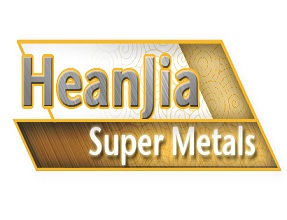You are here: home > Nichrome News > Nichrome resistance wire over the silicon carbide
Product (738)
- Pure Nickel Products (38)
- Incoloy Products (74)
- Inconel Products (72)
-
FeCrAl Product
(99)

-
Nichrome Products
(68)

- Monel Products (36)
- Hastelloy Products (49)
- Nickel Iron Alloy Product (59)
-
Nickel Copper alloys
(47)

- Nonferrous Metal Product (27)
-
Resistance Wire
(90)

- Stainless Steel Product (42)
- Mesh Demister (20)
- Others (17)
Product Forms (14)
Quality Certificate (11)
Learning Gallery (30)
Incoloy News (9)
Inconel News (22)
Molybdenum News (7)
Nikrothal News (4)
Nichrome News (13)
Titanium News (2)
Nickel News (8)
Alloys House (30)
Tools (27)
Nickel alloy News (30)
Latest Buzz (30)
nickel chrome copper iron alloys news (28)
Credit Report
Products Index
Company Info
Heanjia Super-metals Co., Ltd. [China (Mainland)]
Business Type:Manufacturer, Trading Company
City: Beijing
Province/State: Beijing
Country/Region: China (Mainland)
Nichrome News
Nichrome resistance wire over the silicon carbide
The silicon carbide used as a conventional heating element is designed to provide the complete power supply even in case of increment in the resistance of wire that becomes 4 times of new elemental resistance. Industrially, the large resistance rarely reached to its maximum value. Usually an increment in the resistance occurs two to three times that is acceptable.
When a bunch of silicon carbide element is kept at the same temperature of nichrome resistance wire and conditions, we find that the resistance of silicon carbide increases with the passage of time that may be variable as per the manufacturing variation and local differences in the environments.
When a bunch of silicon carbide element is kept at the same temperature of nichrome resistance wire and conditions, we find that the resistance of silicon carbide increases with the passage of time that may be variable as per the manufacturing variation and local differences in the environments.
Soon the elements of silicon carbide are connected in parallel to the circuit, the change in the resistance minimizes. The current I passes through the entire elements connected in the series, thus the element connected with high resistance value produces large heat due to which the element gets more hot and aging increases quickly.
The factors that emphasize the life of the silicon carbide heating elements are primarily the same like those that assess the life of heating elements. The temperature and structure of the furnace atmosphere, watt loading, and kind of service, procedure and maintenance technologies these all become alive. Considering the element choice conforms the good practice that is based on the furnace temperature and atmospheric criteria. The deep evaluation of these points is far from the scope. But comparing the elemental resistances, if essential is the group replacement to meet these similarities is the prime factor.
Specifically in the aggressive atmosphere the life of silicon carbide can be enhanced by imposing the certain kind of glazing and coating. In special cases, the silicon carbide materials can be sealed in the metallic or ceramic vessels to secure them from the tough surroundings.
Excluding certain conditions for specific element grades, there are no minimum constraints of elemental temperature. But using a material with large MET value in the application that the MFT is far lower than MET can be unexpectedly expensive. Particularly absolute maximum watt loadings for the three levels of elements are mentioned below:
The watt loadings for metallic elements are 8 to 12 W/cm2, for silicon carbide are 10 to 15 W/cm2 and for molybdenum disilicide are 20 to 30 W/cm2. The suggested maximum value may change on the base of its production and the element quality can be enhanced on the base of its type. The practical design limit watt loadings should always be less due to impact of MET, conditions produced in furnace and elemental geometry. Due to its high cost, the silicon carbide elements are less likely preferred and this is the reason that nichrome heating wire is more preferred.
Pre Page:
Facts about Nichrome Wire
Next Page:
Resistance nature of metallic materials
.gif)


